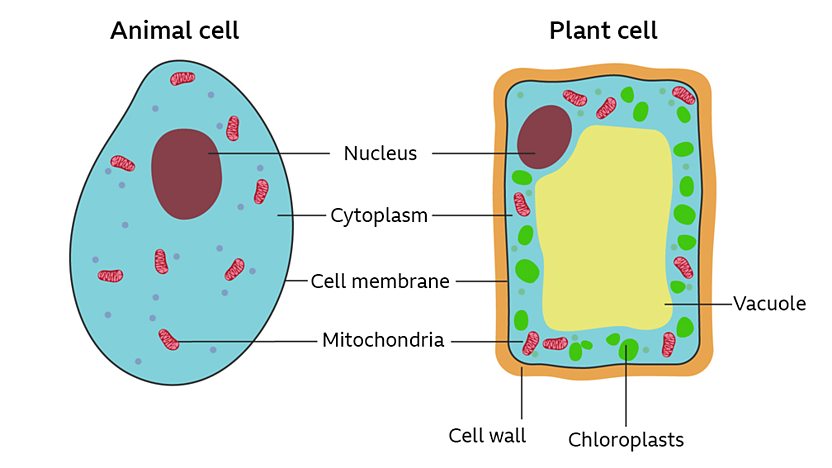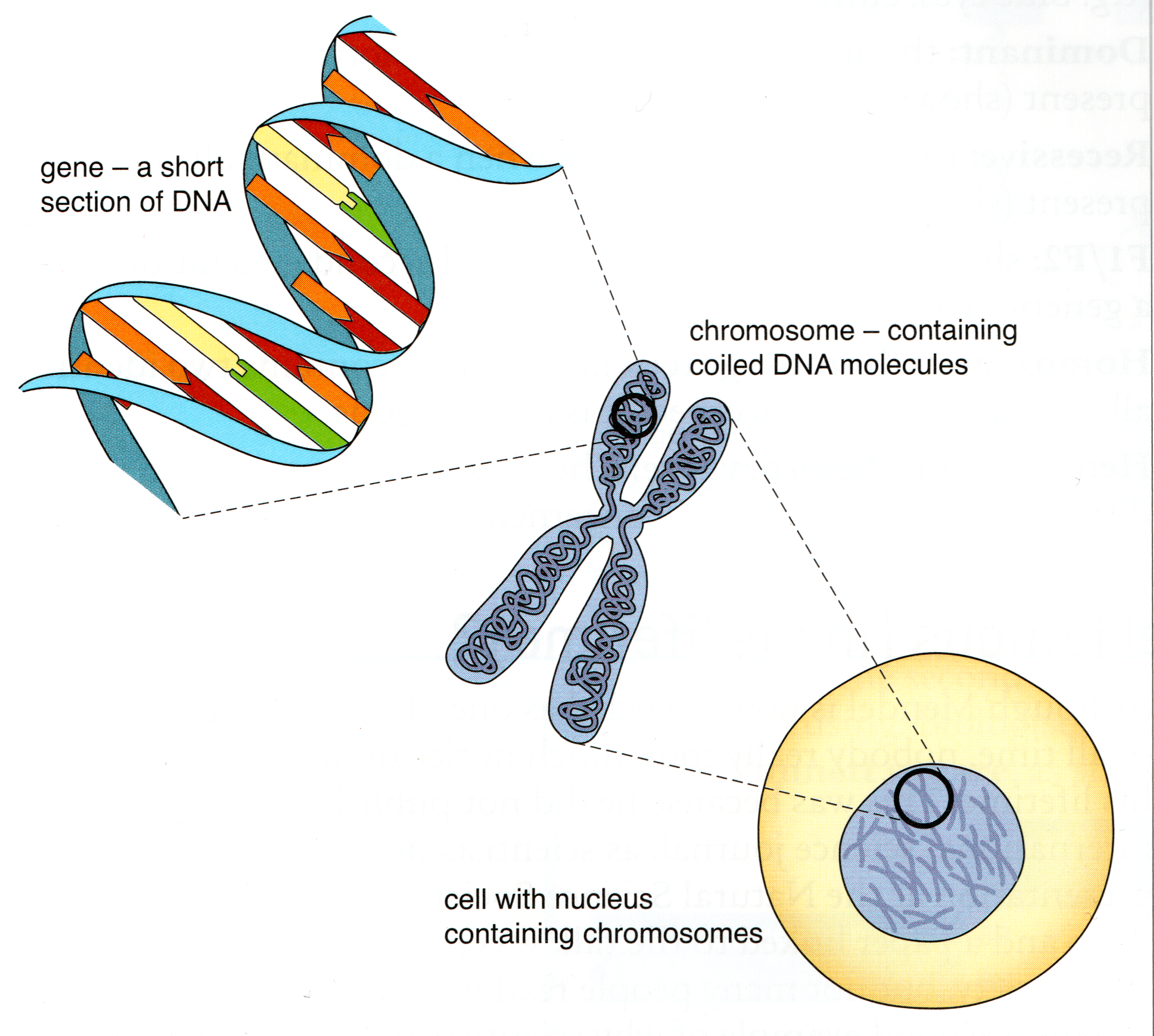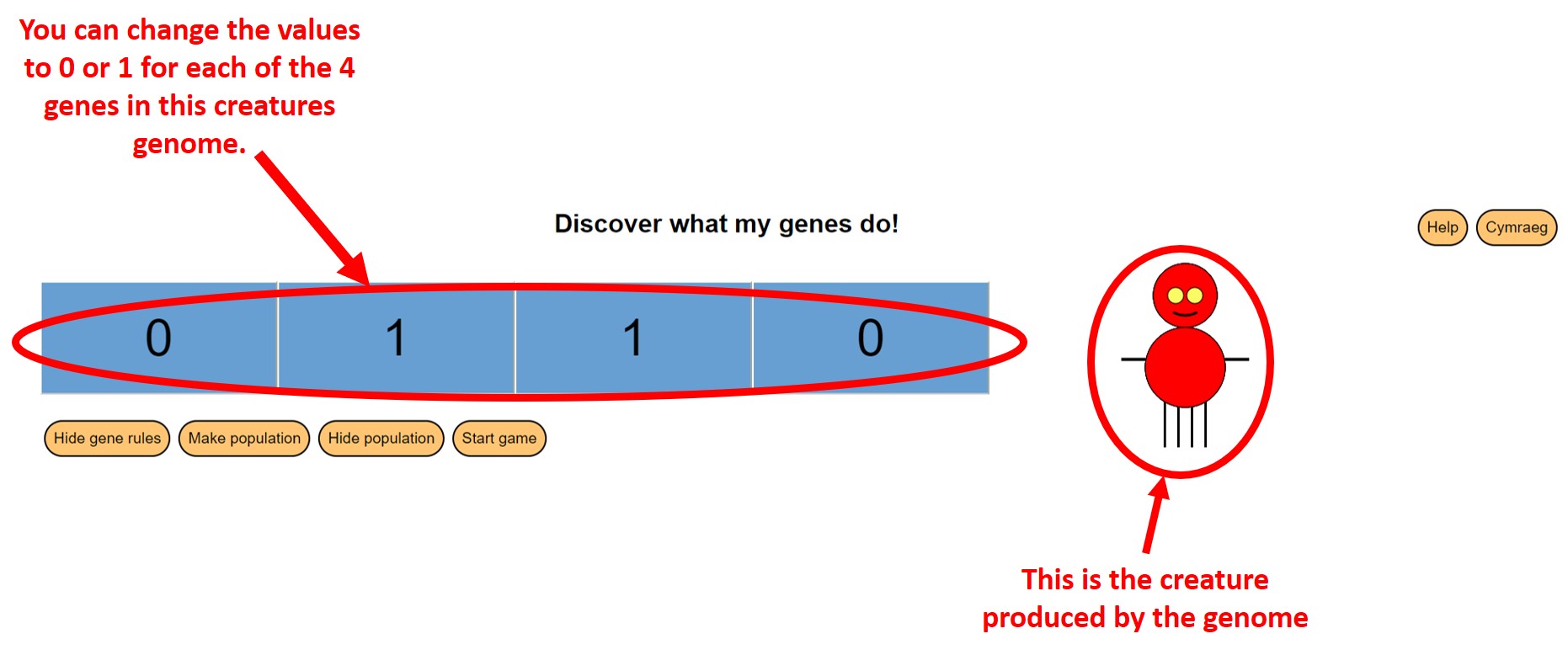

This exercise is to help students understand about the basics of genetics and apply their learning to a game created by staff at Aberystwyth University's Computer Science Department.
This is aimed at KS3 and GCSE, fitting into the WJEC biology/science curriculum for both
Below is a labelled image comparing an animal cell to a plant cell

https://www.bbc.co.uk/bitesize/topics/znyycdm/articles/zr69dxs
Draw a table that includes the name of each cell part labelled above, whether they are present in animal cells, plant cells or both, and what they do (their function). If you are stuck for how to design such a table here is a pre-made table template. You may need to research their functions if you haven't previously covered this topic.
Hint: If you don't know where to find the information to complete your table try BBC Bitesize: What are cells?

The nucleus is referred to as the control centre for the cell.
It contains structures called chromosomes.
Chromosomes come in pairs. One from the mother, one from the father.
Humans have 46 chromosomes in total (or 23 pairs).
A chromosome contains coiled up strands of DNA (DeoxyriboNucleic Acid).
Our DNA is made of lots of smaller sections called genes.
Humans have between 20,000 and 25,000 different genes each.
Each gene is like a section of code (written in chemicals called bases)
The complete code on these genes is referred to as a genetic code.
A human's genetic code is unique to the person (and their identical twin, if they have one).
The genetic code therefore determines the characteristics of a cell and the organism (the plant or animal) as a whole.
An organism's complete genetic code is called their genome.
WJEC GCSE Science; Pollard and Schmit; 2011; p40
Ok, that was a lot of information to take in at once. Therefore, let us do a little exercise of fill-the-blanks to help us check our understanding of this.
Copy and complete the following paragraph using the information above.
A genome is an ________________ complete set of genetic ________________.
This is made up of 20,000 to 25,000 different ________________.
The code in these is written in ________________ called bases.
All of this is stored in our ________________ inside the chromosomes.
These, in turn, are inside the ________________ of each cell.
Hint - The missing words are; genes, nucleus, organism's, DNA, code, chemicals.
Staff at Aberystwyth University have developed an in-browser activity called the Genome Game. This looks at how different genomes (or sets of genes) can change characteristics of a creature. It then challenges you to use this knowledge to determine which characteristic each gene controls and how.
See below for how to navigate the start screen.

To make it slightly easier there are only two options for each gene, 1 or 0, this is called a binary system. We are also only looking at sets of 4 genes at a time, each of which has an obvious effect on the appearance of the creature created.
If you click on the bottom labelled 'Show Gene Rules', a table will load up that will allow you to change what each gene does and how. Here's the first challenge; try to recreate the below creature, matching both appearance and the genome code.

The button labelled as 'Make Population' will create a small sample population of creatures from the gene rules it's been given. The 'Hide Population' button removes these samples from your screen.
Once you are feeling confident with how the genes effect the creature, click on the button marked 'Start Game'. This will load up a sample population of creatures and you will need to work out and enter the gene rules that created them. See if you can beat the clock.
Human genes are not binary. There are 4 different bases that make up the genetic code and each gene contains a large number of these (from a few hundred to over two million).
If you look at the Genome Game above, the 4 binary codes that made up the genome provide only 16 different combinations. If there were four options for each gene (like the four options for each base in humans) the number of possible combinations would be 256 and you wouldn't be able to determine the effects of each gene through the sample size of 5 given in the game.
The Human genome contains a total of approximately 3 billion (3,000,000,000) bases. To print out a human genome, in standard size font, would take about 750,000 sheets of A4. The task of decoding the Human genome is therefore dealing with incomprehensibly massive numbers and would be impossible to do without the use of computers.
To analyse these huge amounts of data in an attempt to 'crack' the code that makes us, requires a specialism called Bioinformatics. These specialists have to use biology, computer science, information engineering, mathematics and statistics to even have a chance of assisting with the global effort to solve the riddle of our genetics.
Can you think of any reasons why we would want to decode the human genome?
Here is a link to the answer sheet for this exercise. Please only use it once you have attempted all the activities.